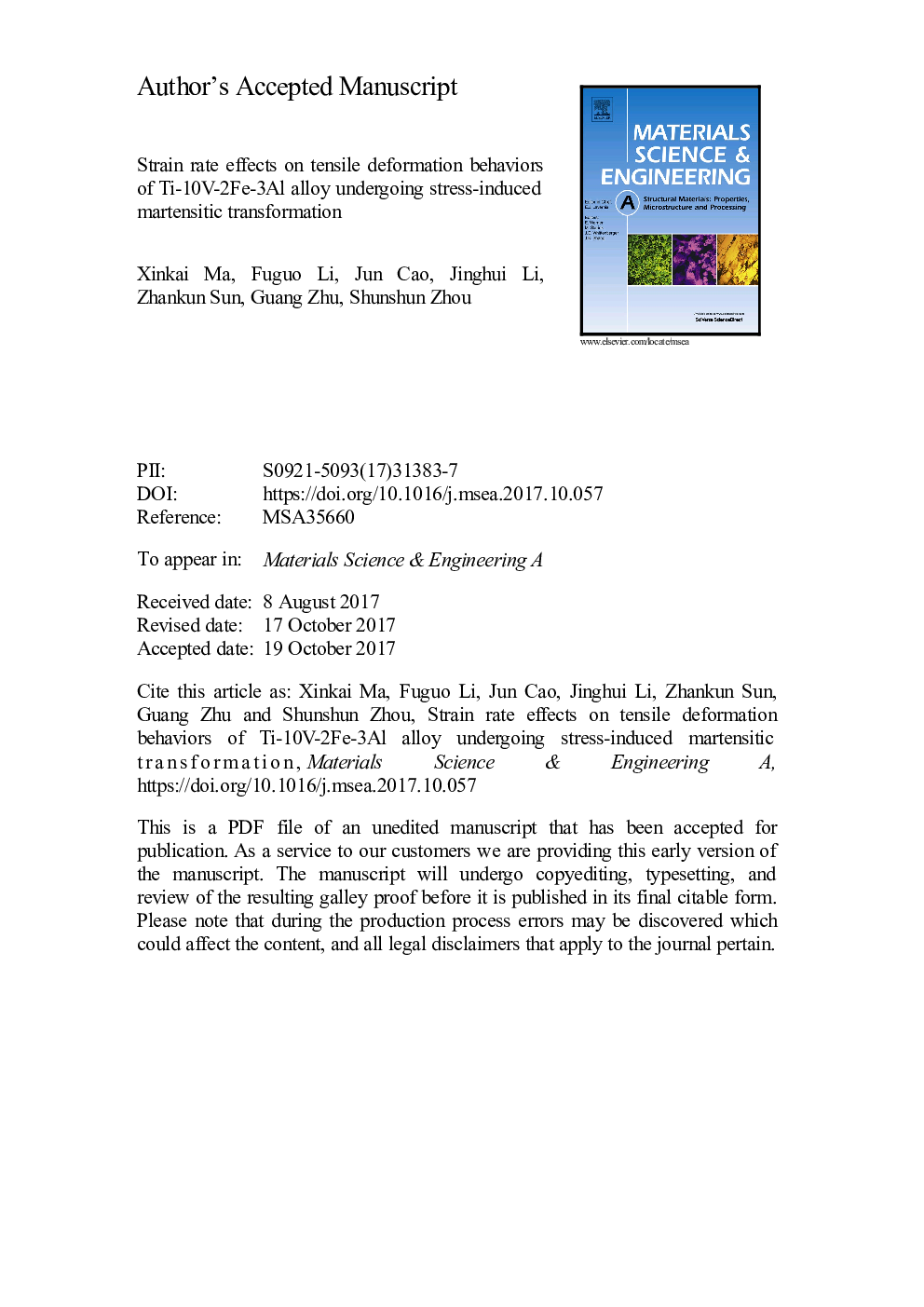| Article ID | Journal | Published Year | Pages | File Type |
|---|---|---|---|---|
| 7974415 | Materials Science and Engineering: A | 2018 | 18 Pages |
Abstract
In this study, the effects of strain rate on trigger stress (ÏT) of stress-induced martensitic transformation (SIMT) and mechanical properties of Ti-10V-2Fe-3Al alloy were investigated. The experimental results indicated that the SIMT occurs in the β-solution treated Ti-10V-2Fe-3Al alloy at the strain rate ranging from 10â5 sâ1 to 10â1 sâ1. The trigger stress rose continuously with the increase of strain rate, which could be explained by the free energy change associated with the SIMT. However, with the strain rate decreasing, both the ultimate tensile strength (UTS) and the uniform elongation (δ) were found to increase, which exhibited the negative strain rate sensitivity (NSRS). Meanwhile, the shallow dimples on the fracture surface became non-uniform and large under high strain rate. The high work hardening rate and three-stage work hardening behavior were closely related to the SIMT serving as obstacles of dislocation motion. It is found that the formation of thin α" plates can divide β grain into smaller domains which responded to the improvement of mechanical properties.
Related Topics
Physical Sciences and Engineering
Materials Science
Materials Science (General)
Authors
Xinkai Ma, Fuguo Li, Jun Cao, Jinghui Li, Zhankun Sun, Guang Zhu, Shunshun Zhou,
